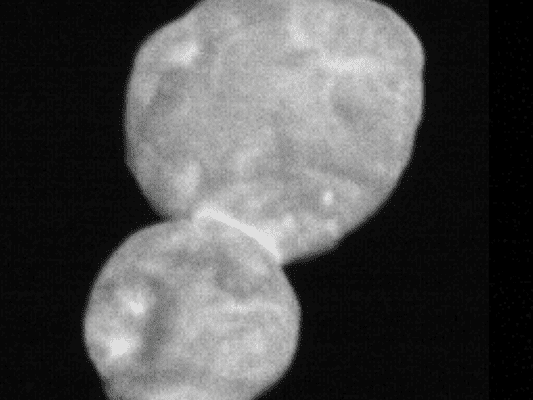
News
NASA Posts First Image of Furthest Object in Space Ever Photographed
It’s only the start of the New Year, and NASA is already breaking records, providing monumental new images of the farthest object to ever be photographed in space. Scientists with NASA and John Hopkins University Applied Physics Laboratory proudly confirmed the flyby of the New Horizon probe took stunning images of Ultima Thule, a strange Kuiper Belt object located some 4 billion miles away from Earth.
As the New Horizons probe zoomed past Ultima at 31,000 miles per hour, it was able to snap detailed photos of the object, thanks to thousands of operations successfully working in sync. This, paired with the fact that Ultime Thule is nearly 100 time smaller than Pluto is testament to the incredible talent of those who worked on the New Horizons probe and the technology contained within it.

Initially, the first photos beamed back to NASA were extremely low-resolution, essentially a few pixels not giving much detail. With New Horizons more than 4 billion miles from Earth, download speeds aren’t exactly blazing fast, with NASA able to receive transmit data at prehistoric speeds of 500 bits per second. However, a few days later, images were received with much greater detail.
Color imagery shows that Ultima Thule is a distinct red color with a bowling pin shaped body. New Horizons principal investigator Alan Stern said “What you’re seeing is the first ‘contact binary’ ever explored by spacecraft. Two completely separate objects joined together.” These images are now providing scientists with valuable insight into how Ultima Thule was formed, what its composition is, and what it can tell us about the birth of our solar system.

NASA/Johns Hopkins University Applied Physics Laboratory/Southwest Research Institute
Scientists speculate that Ultima Thule was originally two separate celestial bodies that eventually merged some 4.5 billion years ago at the birth of our solar system. This was no catastrophic collision as you’d expect two giant space rocks to be, however. The collision most likely took place at speeds somewhere between one to three miles per hour. Jeff Moore, head of NASA Ames’ geology and geophysics team describes the speeds best, stating, “if you were in a car collision… you wouldn’t bother to fill out insurance forms.”
Going forward, scientists will have to wait until February to retrieve the best images from the on-board hard drives of New Horizons. This will kick off a near 20-month mission to begin extracting the massive amounts of data from the wildly successful New Horizons mission.






2 Comments